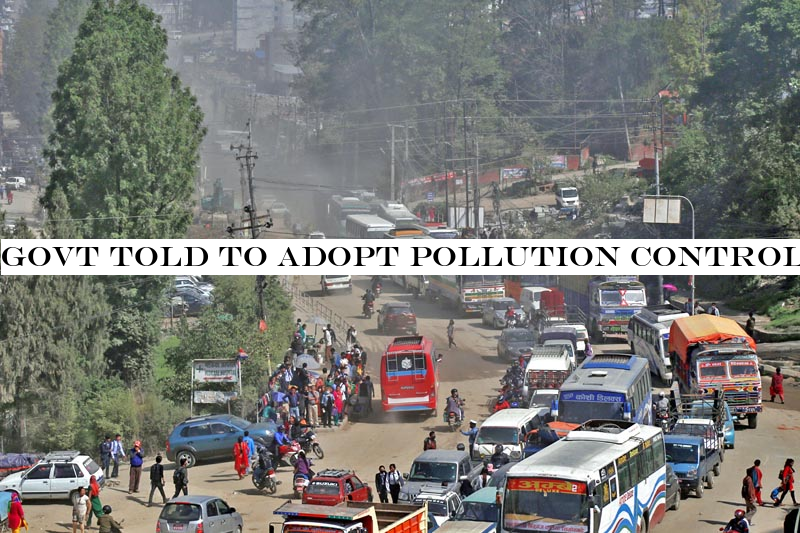
Kathmandu, August 6
The National Human Rights Commission has said that the government and stakeholders should try harder to control and reduce environmental pollution in Kathmandu valley.
The rights body urged the authorities concerned to carry out monitoring of pollution standards set by the government and initiate action against violators as the rules are binding to all stakeholders.
&The government lacks provision of imposing on the spot fine on the owners of vehicles that fail emission tests in accordance with Nepal Vehicle Mass Emission Standard-2015, Nepal Vehicle Pollution Standard-2015 and Motor Vehicle and Transport Management Act-1993.
Therefore, the government needs to enact and enforce rules enabling on the spot action against errant owners,& a report recently released by the NHRC said.
As per vehicle emission standards implemented by the government, permissible level for four-wheelers registered in Nepal in or before 1980 is maximum 4.5 per cent of carbon monoxide (CO) of the total emission and maximum 1,000 parts per million hydrocarbon concentration.
Four-wheelers registered in the country after 1981 should not emit CO exceeding three per cent of the total emission and their ppm hydrocarbons emission is required to remain below 1,000.
Two-wheelers are not permitted to emit CO exceeding 4.5 per cent of the total emission while their ppm hydrocarbon should be below 7,800.
In recent emission tests conducted by traffic police in various parts of Kathmandu valley, over 50 per cent of vehicles were found violating rules on air pollution.
The authorities have also been told to provide for provision of emission testing facilities at all entry points of the valley for conducting tests on public, private and government vehicles.
Any vehicle that fails emission tests should not be allowed inside the valley.
The rights body has also urged the government to enforce the provision of green sticker throughout the valley.
In addition, the NHRC has expressed concern about air pollution aggravated by brick factories operating inside the valley.
Use of large quantities of coal in brick kilns significantly contribute to emissions of carbon dioxide and particulate matter including black carbon, sulphur dioxide, oxides of nitrogen and carbon monoxide, causing serious and long-term impacts on human health.
About 110 brick kilns (Kathmandu 15, Lalitpur 32 and Bhaktapur 63) are in operation in the valley.
The pollutants have adverse impact on the health of workers, valley residents and its vegetation.
&The government needs to ensure that brick kiln owners adopt technologies that help control and prevent emission of carbon dioxide and black carbon, besides conducting regular health check-up of workers and their children,& the NHRC said in its report.
The rights body suggested the government to make provision of waste segregation at sources and to arrange separate vehicles for collection and transportation of biodegradable and non-biodegradable waste.
The government has been asked to control visual pollution by removing posters, pamphlets and advertisements placed on walls and utility poles.
The authorities have also been suggested to implement ban on open burning of waste, including plastics, as such a practice was adding to air pollution in the valley.
&NHRC also recommends the government to make arrangements of free medical treatment for persons affected by air pollution and recover reasonable compensation to the victims from the concerned polluters,& the report read.
According to Article 30 of the constitution each citizen has the right to live in a clean and healthy environment and be compensated for the harm caused by pollution.
The post Govt told to adopt pollution control measures appeared first on The Himalayan Times.

 9
9





